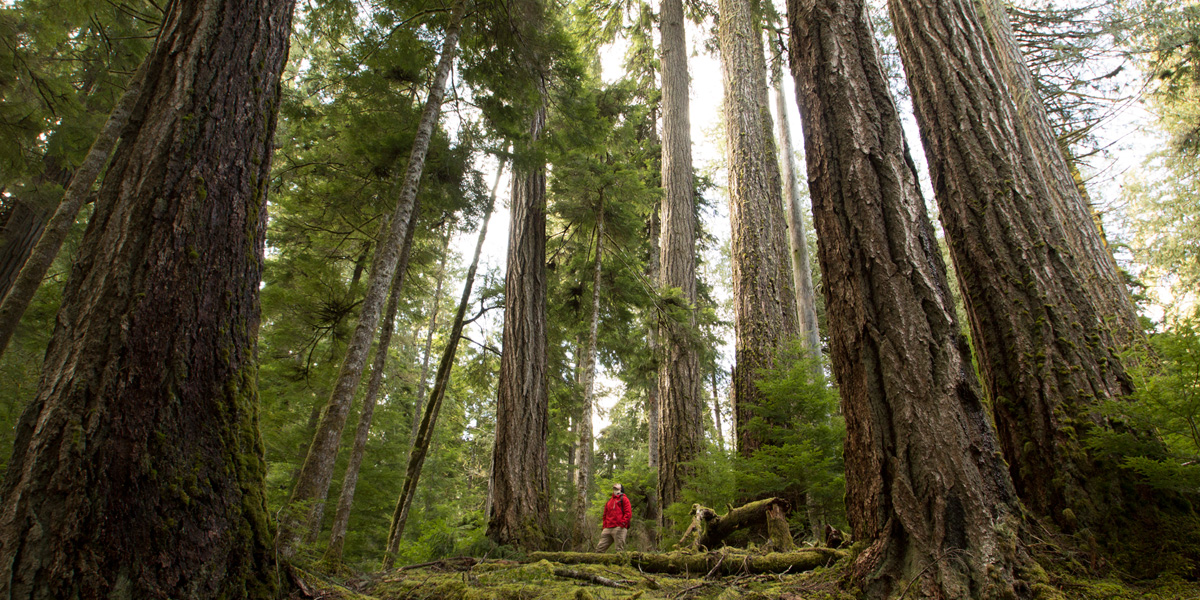Environmentalists, B.C. at loggerheads over Douglas fir
Globe and Mail

When commercial logging began in B.C. about 150 years ago, stands of coastal Douglas fir covered 135,000 hectares of land along the Georgia Strait on the mainland coast, on southeast Vancouver Island and on the Gulf Island.
Today almost all of that towering forest has been logged.
“We are down to the last one per cent,” says Devon Page, an Ecojustice lawyer who thinks we have cut enough Douglas fir, a tree so iconic it appears on the logo of the B.C. Forest Service.
In an unusual case, Mr. Page has brought before the Supreme Court of British Columbia, two environmental groups are battling the province over the fate of the last 275 hectares of old-growth Douglas fir remaining on the coast.
At the heart of the matter is an argument over what responsibilities the government has to protect species at risk. And what makes the case so unusual is that the species at issue is not the rare Spotted Owl or threatened Marbled Murrelet – it’s a forest ecosystem, a community of plants known officially as Douglas fir/Dull Oregon Grape.
Can a forest type really face extinction?
The Western Canada Wilderness Committee and ForestEthics Solutions Society think so, and that’s why they’ve taken the Minister of Forests and Minister of Environment to court in an attempt to stop further logging. The case is expected to be heard in February, but documents by both sides have already been filed in court.
Mr. Page said the environmental groups are seeking an order that the government is legally obliged to require logging companies to file plans on how they will protect endangered stands of coastal Douglas fir.
In his view, if the government is made to direct the companies to come up with such species-at-risk management plans, they will have to stop logging because there is so little of the forest type left.
The government maintains it has discretion in calling for such protection plans and that it is constrained by a legislated requirement that states it cannot make decisions that reduce B.C.’s timber supply.
The government says it is committed to protecting species at risk – but that it is also required to keep the forest economically productive.
“The objective set by government for wildlife is, without unduly reducing the supply of timber from British Columbia’s forests, to conserve sufficient wildlife … for the survival of species at risk,” the government states in its response to petition.
And that’s where the crunch comes, not only for coastal Douglas fir, but for Spotted Owls, woodland caribou and other species as well. Because to save forest-dependent species, you have to protect habitat – and to do that you have to reduce the supply of timber for logging. That’s especially true when the species at risk is a tree.
The government recognizes the dilemma, but argues it is not something the courts should be concerned with.
“Reasonable people can disagree as to whether the economic value of the timber industry should take priority over environmental and ecological concerns but … this type of debate is distinct from the legal task of interpreting the legislative intention embodied in specific provisions,” states the government petition. “Determining how to balance competing goals is a task for elected government officials.”
The environmental groups disagree. As they see it, the government has a legal duty to protect species at risk – and when you get down to the last 1 per cent of old-growth Douglas fir, it is time for the courts to step in.
If the Supreme Court of B.C. agrees, the last 275 hectares of old-growth coastal Douglas fir may be spared from the axe, by judicial decree.


